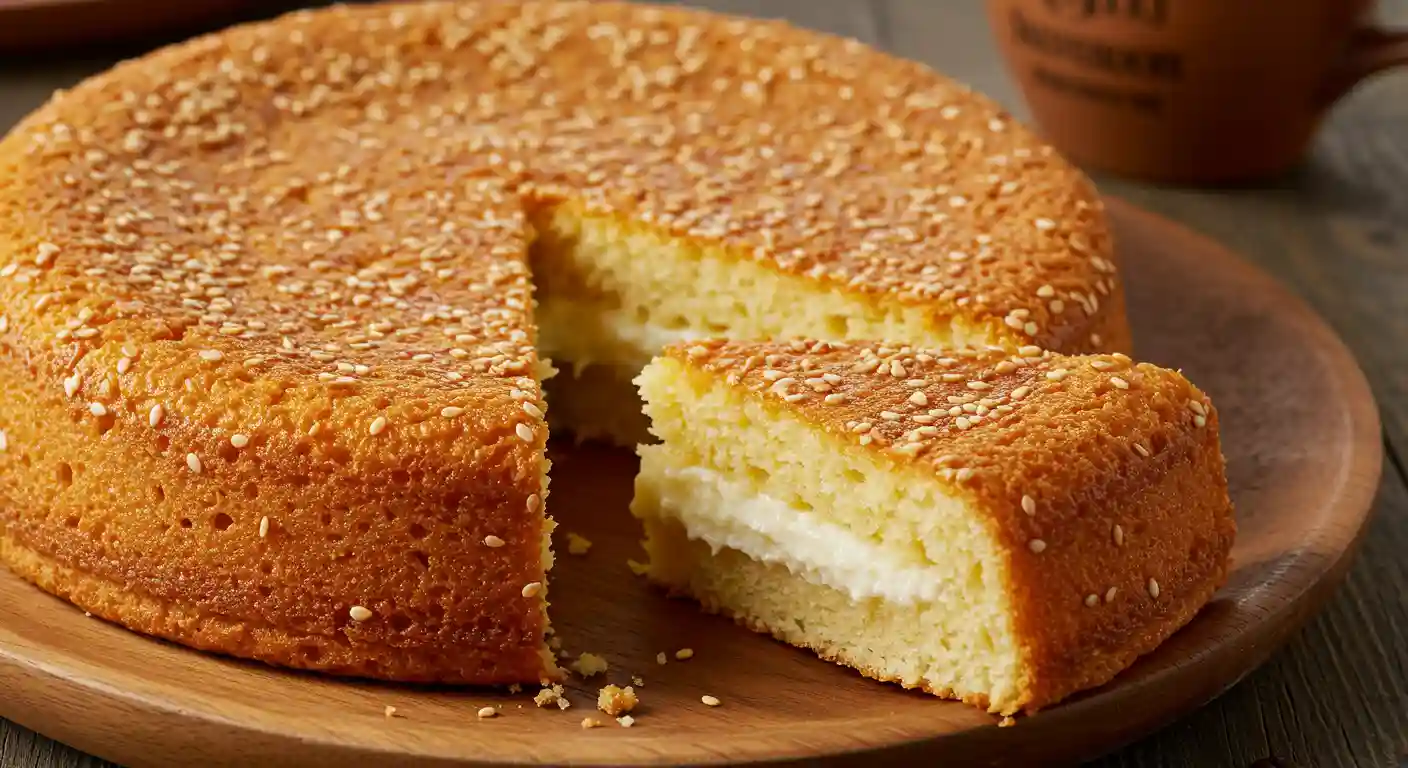Salvadoran quesadilla is a cherished Central American dessert, distinct from its Mexican namesake. Unlike the savory tortilla-based dish, this treat is a sweet, cheesy, and moist pound cake infused with rich dairy flavors. Traditionally crafted with queso duro blando, milk, eggs, and rice flour, it boasts a delicate crumb and a subtle nuttiness from sesame seeds. In El Salvador, it graces breakfast tables and special gatherings, symbolizing warmth and tradition. While the classic version is baked, modern variations see the Salvadoran quesadilla wrapped up in innovative techniques, like crisping on a George Foreman grill for a unique texture twist.
Table of Contents
Why Are Quesadillas Good for the 6 Essential Nutrients?
Discuss the 6 essential nutrients :
The human body relies on six essential nutrients to function optimally. Carbohydrates provide the primary energy source, fueling daily activities and metabolic processes. Proteins, composed of amino acids, are fundamental for muscle repair, enzyme production, and overall cellular function. Fats, often misunderstood, support hormone regulation, brain health, and energy storage. Vitamins act as catalysts for various biochemical reactions, while minerals like calcium and iron fortify bones and enhance oxygen transport. Water, the most vital nutrient, ensures hydration, regulates temperature, and facilitates digestion. A well-balanced diet, even with treats like Salvadoran quesadilla wrapped up, can contribute to overall nutritional well-being.
How Salvadoran quesadilla provides carbohydrates from rice flour and protein from cheese and eggs.
A well-crafted Salvadoran quesadilla wrapped up in rich flavors also delivers essential macronutrients. Rice flour, the primary base, provides a steady source of complex carbohydrates, supplying sustained energy and aiding digestion with its gluten-free properties. Meanwhile, queso duro blando and eggs contribute high-quality proteins, essential for muscle maintenance, enzyme production, and overall cellular function. The cheese enriches the dessert with calcium and healthy fats, while eggs introduce vital amino acids for tissue repair. This harmonious blend of carbohydrates and protein makes the Salvadoran quesadilla not only a delightful indulgence but also a balanced treat with nutritional value.
Calcium and vitamins from ingredients like queso duro blando, milk, and eggs.
A Salvadoran quesadilla wrapped up in tradition also offers essential nutrients, particularly calcium and vitamins. Queso duro blando, a key ingredient, is rich in calcium, fortifying bones and supporting nerve function. Milk, another vital component, enhances the dessert’s creamy texture while supplying vitamin D for improved calcium absorption. Eggs, packed with B vitamins, aid in energy metabolism and brain health. Together, these ingredients create a nutrient-dense treat that not only delights the palate but also nourishes the body. Every bite of this traditional Salvadoran delicacy delivers a blend of flavor and essential micronutrients.
Compare its nutritional value to other baked goods.
A Salvadoran quesadilla wrapped up in rich flavors offers a unique nutritional profile compared to other baked goods. Unlike traditional cakes laden with refined flour and excess sugar, this delicacy derives its carbohydrates from rice flour, making it a gluten-free alternative with a lighter texture. The inclusion of queso duro blando and eggs boosts its protein content, surpassing many pastries that rely solely on butter and sugar. Additionally, it provides calcium and essential vitamins, unlike typical sweet breads that lack nutrient density. While indulgent, its balance of healthy fats, protein, and micronutrients makes it a more nourishing option than many conventional baked treats.
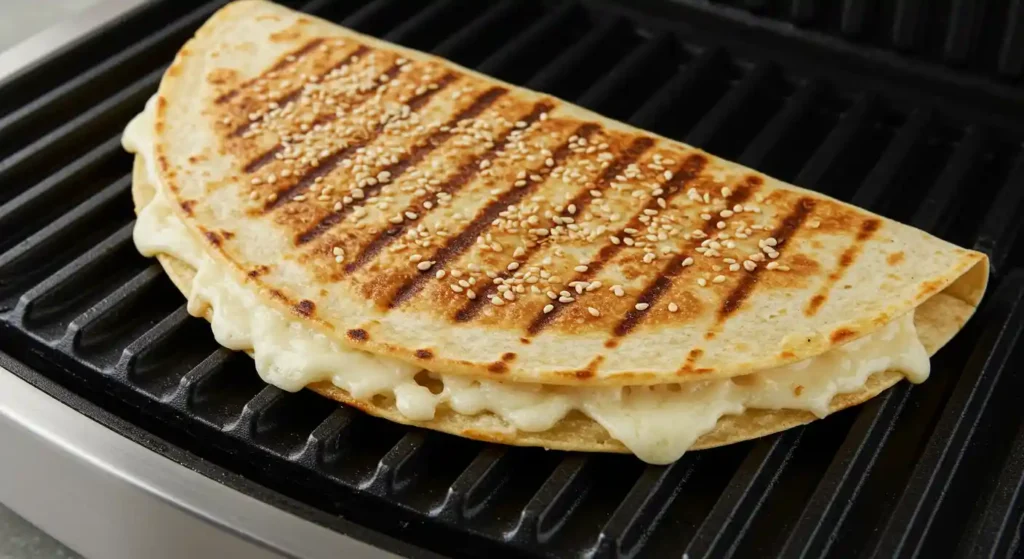
Quesadilla de Birria Menu
The difference between quesadilla de birria and Salvadoran quesadilla
The distinction between quesadilla de birria and Salvadoran quesadilla wrapped up in tradition lies in their composition and cultural origins. Quesadilla de birria is a savory, Mexican dish featuring a crisped tortilla filled with slow-cooked, spiced beef, often served with consommé for dipping. In contrast, Salvadoran quesadilla is a sweet, cheese-laden bread with a delicate crumb, crafted from rice flour, queso duro blando, and eggs. While the former is a bold, umami-rich street food, the latter is a refined, bakery-style treat enjoyed with coffee. Despite sharing a name, these dishes cater to entirely different palates and culinary traditions.
How quesadilla de birria is served in restaurants, including common menu items.
In Mexican restaurants, quesadilla de birria is a sought-after delicacy, often served with a rich, flavorful presentation. Typically, a crispy, cheese-filled tortilla is packed with tender, slow-braised birria beef, then griddled to perfection. It’s commonly accompanied by a side of consomé, a deeply seasoned broth used for dipping, enhancing its savory depth. Many menus feature variations, including birria tacos, mulitas, and burritos, each offering a different take on the beloved dish. While vastly different from a Salvadoran quesadilla wrapped up in sweetness, quesadilla de birria remains a staple of indulgent, umami-rich Mexican cuisine.
How some restaurants offer fusion options, like a cheese-filled Salvadoran quesadilla with birria-style beef.
Some innovative restaurants are blending culinary traditions by offering fusion options like a cheese-filled Salvadoran quesadilla wrapped up with birria-style beef. This creative twist combines the sweet, cheesy richness of the Salvadoran quesadilla, traditionally baked with queso duro blando, with the savory depth of birria beef, slow-cooked in aromatic spices. The result is a unique, indulgent dish that balances contrasting flavors—rich, spicy, and creamy. These fusion creations bring together the best of both worlds, offering a new take on classic flavors while honoring the culinary roots of both Mexico and El Salvador in one memorable bite.
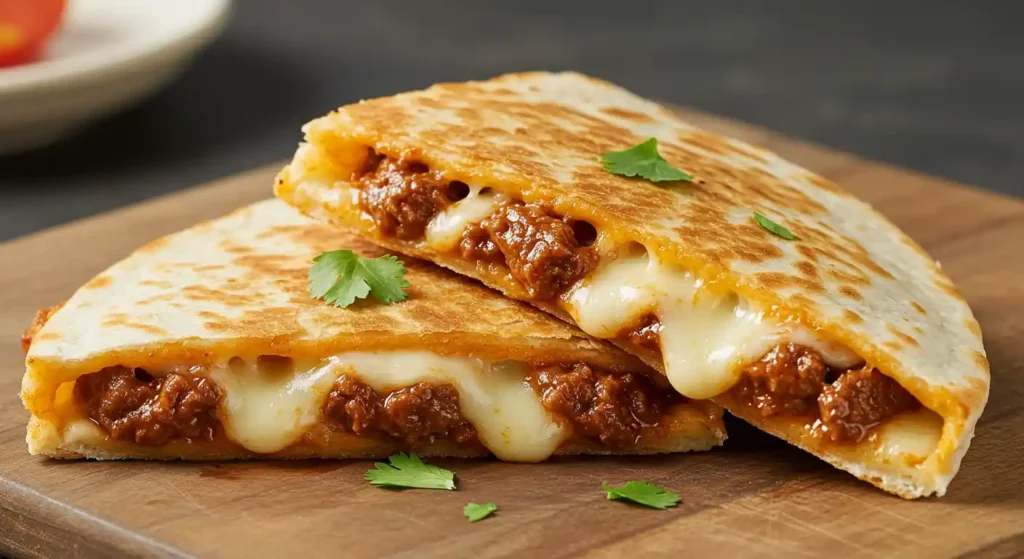
Can I Eat a Chicken Quesadilla with Type 2 Diabetes?
How a traditional Salvadoran quesadilla contains sugar and flour, which may affect blood sugar.
A traditional Salvadoran quesadilla wrapped up in sweetness often contains sugar and flour, both of which can impact blood sugar levels. The inclusion of sugar adds to its delightful sweetness but may cause a rapid spike in glucose, particularly for individuals sensitive to sugar fluctuations. Similarly, the flour used in the recipe, typically refined, is rich in carbohydrates that the body converts into glucose. This combination can lead to a higher glycemic index, potentially affecting those with insulin resistance or diabetes. While delicious, it’s important to enjoy this indulgence in moderation, especially for individuals managing blood sugar levels.
Diabetes-friendly alternatives, like using almond flour or reducing sugar.
For those managing diabetes, Salvadoran quesadilla wrapped up can be adapted to reduce its impact on blood sugar. One effective alternative is substituting almond flour for traditional rice flour, which is lower in carbohydrates and offers a lower glycemic index. Additionally, reducing the amount of sugar or using natural sweeteners like stevia or erythritol can help maintain the treat’s sweetness without causing blood sugar spikes. These adjustments allow for a diabetes-friendly version of the beloved Salvadoran quesadilla, offering a healthier option without compromising on flavor or texture. Such alternatives can make indulgent dishes more accessible for those with dietary concerns.
Compare Mexican-style chicken quesadillas, which use tortillas, to the baked Salvadoran version.
Mexican-style chicken quesadillas typically use flour tortillas as a base, filled with shredded chicken and cheese, then grilled or pan-fried to achieve a crispy exterior. The focus is on savory, melty fillings, often accompanied by salsa or guacamole. In contrast, the Salvadoran quesadilla wrapped up is a baked dessert bread made with rice flour, cheese, and eggs, creating a sweet, moist texture. Unlike the Mexican version, which emphasizes a savory filling, the Salvadoran quesadilla is a stand-alone treat that combines the flavors of cheese and a delicate sweetness. These distinct approaches highlight cultural differences, with each offering a unique experience.
Tips on portion control and balancing with fiber-rich foods.
When enjoying a Salvadoran quesadilla wrapped up, portion control is key to maintaining a balanced diet. To avoid overindulgence, consider cutting the quesadilla into smaller servings and pairing it with fiber-rich foods like vegetables or whole grains. The fiber helps slow digestion, promoting satiety and regulating blood sugar levels. For example, adding a side of leafy greens or a small serving of quinoa can enhance the meal’s nutritional profile. Balancing indulgent treats like the Salvadoran quesadilla with fiber can prevent energy crashes and ensure the body absorbs nutrients more efficiently, creating a satisfying and nourishing experience.
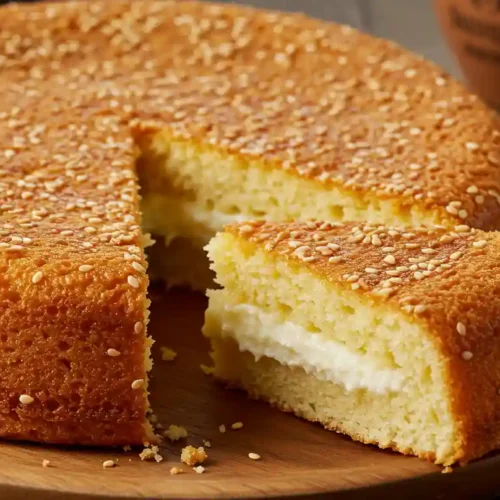
Salvadoran Quesadilla Wrapped Up: A Sweet & Cheesy Delight
Equipment
- Oven or George Foreman Grill
- Mixing bowl
- Whisk or spoon
- Baking dish or tray
- Measuring cups and spoons
Ingredients
- 2 cups rice flour
- 1 ½ cups sugar
- 1 ½ cups queso duro blando or any hard cheese
- 4 eggs
- 1 cup milk
- ¼ cup sesame seeds
- 1 tsp baking powder
- 1 tsp vanilla extract
- A pinch of salt
Instructions
- Preheat the oven to 350°F (175°C).
- In a bowl, combine rice flour, sugar, and baking powder.
- Add the eggs, milk, and vanilla extract, and whisk until smooth.
- Stir in the crumbled queso duro blando.
- Pour the batter into a greased baking dish and top with sesame seeds.
- Bake for 30 minutes or until golden brown and a toothpick comes out clean.
- Optional: Finish by grilling the quesadilla for a crispy outer layer.
- Slice and serve warm!
Notes
2-8 Quesadilla Recipes Folded George Foreman
How a George Foreman grill can be used to make different quesadilla variations.
A George Foreman grill is an excellent tool for making various quesadilla variations, including the Salvadoran quesadilla wrapped up. The grill’s quick heating and even cooking ensure a crispy, golden exterior while preserving the moisture inside. For a traditional twist, Salvadoran quesadillas made with rice flour and queso duro blando can be lightly pressed on the grill to achieve a deliciously crispy texture. For a more savory option, the grill can also be used to crisp Mexican-style quesadillas, filled with meats like chicken or beef. This appliance offers versatility, transforming your quesadilla into a mouthwatering, restaurant-quality treat.
Share 2-8 creative quesadilla recipes, including:
Traditional Salvadoran quesadilla
A traditional Salvadoran quesadilla wrapped up starts as a baked delight, with its soft, moist texture coming from ingredients like rice flour, eggs, and queso duro blando. After baking, the quesadilla is often finished on a grill for a unique twist—creating a crispy exterior while maintaining its tender, flavorful interior. This technique enhances its texture, adding a delightful crunch that contrasts beautifully with the rich, creamy cheese. The grilling process not only intensifies the flavors but also gives the Salvadoran quesadilla a golden, caramelized finish that elevates its overall appeal, offering a balance of softness and crispness in every bite.
Cheesy dessert quesadilla
A Salvadoran quesadilla wrapped up can also be transformed into a decadent cheesy dessert. This version is stuffed with a sweet, creamy cheese filling, often made from queso duro blando, and then baked to perfection. The rich, soft texture is complemented by the sweetness of the cheese, offering a delicate balance of flavors. To add a final touch, the quesadilla is generously topped with sesame seeds, which provide a pleasant crunch and enhance the dessert’s visual appeal. This indulgent treat is a perfect example of how traditional ingredients can be reimagined into a delightful dessert that satisfies both savory and sweet cravings.
Savory twist: Adding spiced beef or birria-style meat.
For a savory twist on the traditional Salvadoran quesadilla wrapped up, consider adding spiced beef or birria-style meat to the filling. The slow-cooked, tender beef, infused with aromatic spices like cumin, garlic, and chili, brings a rich, robust flavor to the dish. This hearty variation blends beautifully with the soft, cheese-filled texture of the Salvadoran quesadilla, creating a balance between savory and creamy. The addition of birria-style meat elevates the dish, offering a deeper, more complex taste, while maintaining the comforting essence of the traditional quesadilla. It’s an unexpected yet delightful way to enjoy this beloved treat.
Low-carb version using almond flour instead of rice flour.
For a low-carb version of the beloved Salvadoran quesadilla wrapped up, substitute traditional rice flour with almond flour. This swap significantly reduces the carbohydrate content while maintaining the dish’s rich, moist texture. Almond flour, packed with healthy fats and fiber, adds a subtle nutty flavor that complements the cheese and eggs. This variation is perfect for those following a low-carb or keto diet, offering a guilt-free indulgence. The Salvadoran quesadilla still delivers its signature sweet, cheesy richness but with a modern twist, making it accessible to those seeking healthier alternatives without compromising on flavor.
Provide grilling tips for achieving the perfect texture.
Grilling a Salvadoran quesadilla wrapped up to perfection requires a few key techniques. First, preheat the grill to medium heat, ensuring an even cooking surface. Place the quesadilla gently on the grill, pressing lightly to achieve that desirable crispy texture. To prevent over-browning, keep a close eye on it, flipping only once the underside is golden and slightly firm. For an even crisper finish, you can lightly brush the quesadilla with butter or oil before grilling. This enhances the flavor while promoting a golden, crisp exterior without drying out the soft, cheese-filled center of the Salvadoran quesadilla wrapped up.
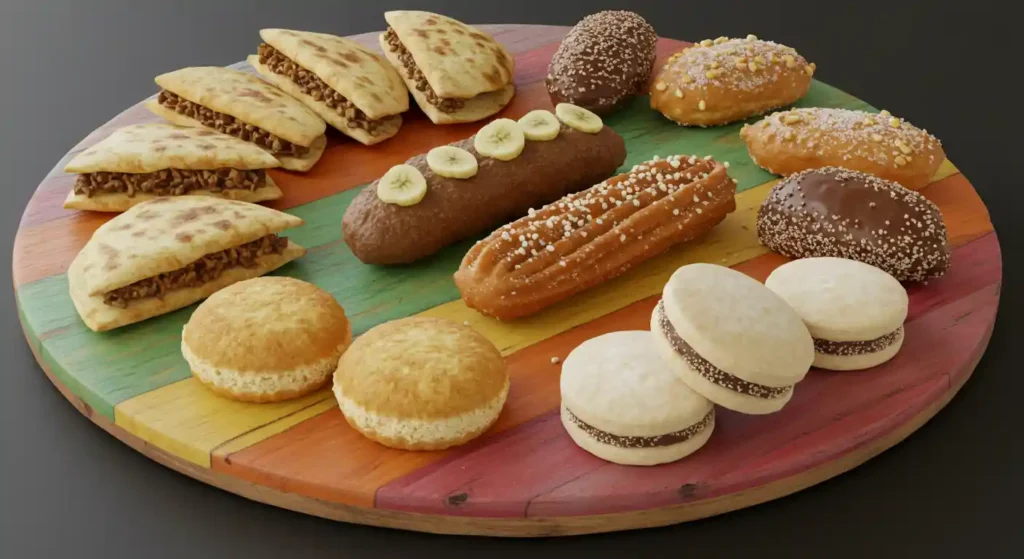
Frequently asked questions:
What distinguishes a Salvadoran quesadilla from a Mexican one?
A Salvadoran quesadilla is a sweet, cheese-based bread, unlike the Mexican quesadilla, which is typically savory and made with tortillas filled with cheese and other fillings. The Salvadoran version uses rice flour and often incorporates ingredients like queso duro blando and sesame seeds. It is baked rather than fried, creating a light, moist texture.
How would you describe the flavor of a Salvadoran quesadilla?
The flavor of a Salvadoran quesadilla is rich and slightly sweet, with a creamy, cheesy taste complemented by a subtle nuttiness from the sesame seeds. The combination of cheese, eggs, and rice flour creates a dense yet soft texture. It’s a delightful balance of savory and sweet, offering a unique dessert experience.
What is the origin and history of the Salvadoran quesadilla?
The Salvadoran quesadilla has roots in Central American culinary traditions, specifically from El Salvador. It evolved from the region’s love of cheese-based treats, influenced by Spanish and indigenous flavors. Originally served as a special treat, it remains a popular dessert, especially during festive occasions.
What are some popular fillings for a quesadilla?
Common quesadilla fillings include cheese, spiced beef, chicken, or vegetables, often combined with herbs and seasonings. Salvadoran quesadillas can also feature sweet cheese blends, while Mexican versions typically include varieties like queso fresco or cheddar. For a savory twist, meats like birria-style beef or seasoned chicken are often added.
Are quesadillas commonly enjoyed in El Salvador?
Yes, quesadillas are widely enjoyed in El Salvador, though they differ from the Mexican variety. Salvadorans savor them as a dessert, especially during holidays or special events. The dish is a staple at bakeries, often served alongside coffee or hot beverages.
What type of cheese is used in Salvadoran quesadillas?
Salvadoran quesadillas typically use queso duro blando, a semi-soft, mildly salted cheese. This cheese adds a creamy richness to the dessert, balancing the sweetness of other ingredients. Its texture and flavor are ideal for baking, creating the perfect consistency for this traditional treat.
How do Mexican and Salvadoran quesadillas differ from each other?
Mexican quesadillas are typically made with tortillas, filled with cheese and savory fillings like meats, mushrooms, or vegetables. In contrast, Salvadoran quesadillas are a sweet, cake-like bread filled with cheese and rice flour, often baked with sesame seeds on top. The two share the same name but differ significantly in flavor, texture, and preparation.
What is the nutritional content or calorie count of a Salvadoran quesadilla?
A traditional Salvadoran quesadilla contains moderate calories, largely from cheese, eggs, and rice flour. A typical serving can range from 150 to 250 calories, depending on the size and specific ingredients used. While it’s a rich treat, it provides a good amount of protein and healthy fats from cheese and eggs.
Conclusion
In conclusion, the Salvadoran quesadilla wrapped up in its sweet, cheesy goodness is a treat worth experiencing. Its unique combination of flavors, from the creamy cheese to the delicate rice flour texture, makes it stand out in the world of desserts. Don’t hesitate to experiment with variations, like grilling it on a George Foreman for an extra crispy texture. Explore more Latin American desserts, and share your thoughts and creative twists in the comments below. This delightful dessert is sure to become a new favorite in your culinary adventures!

